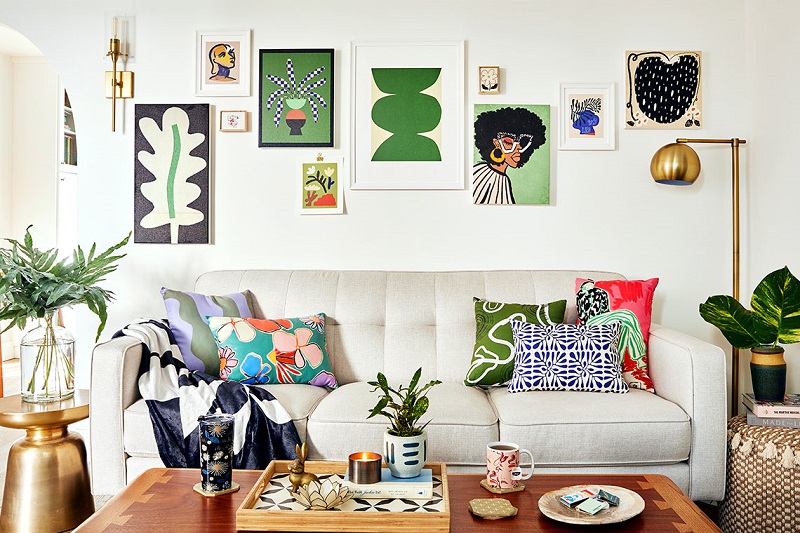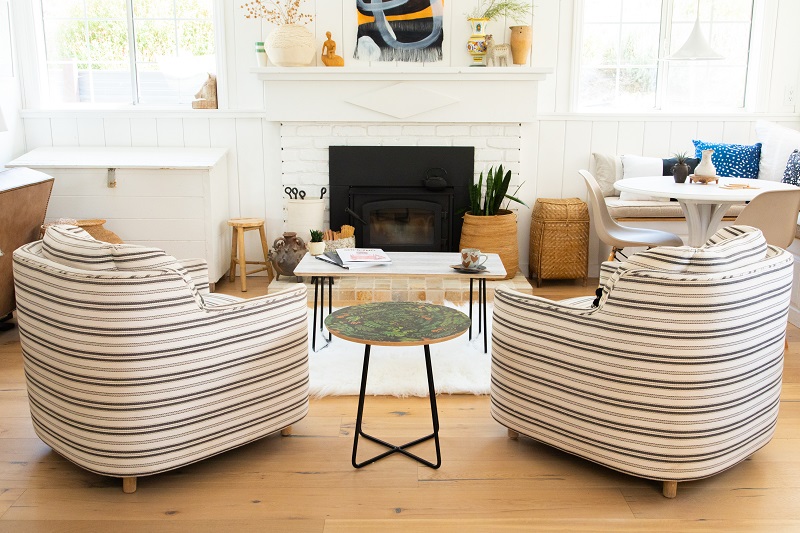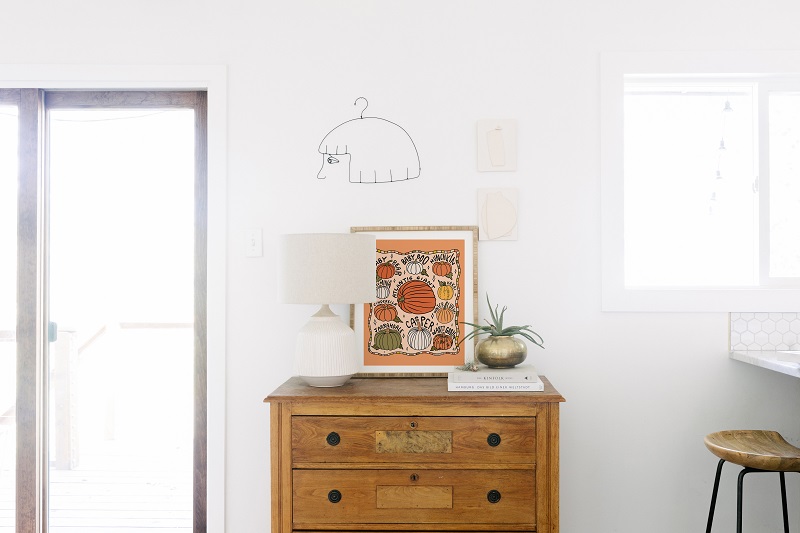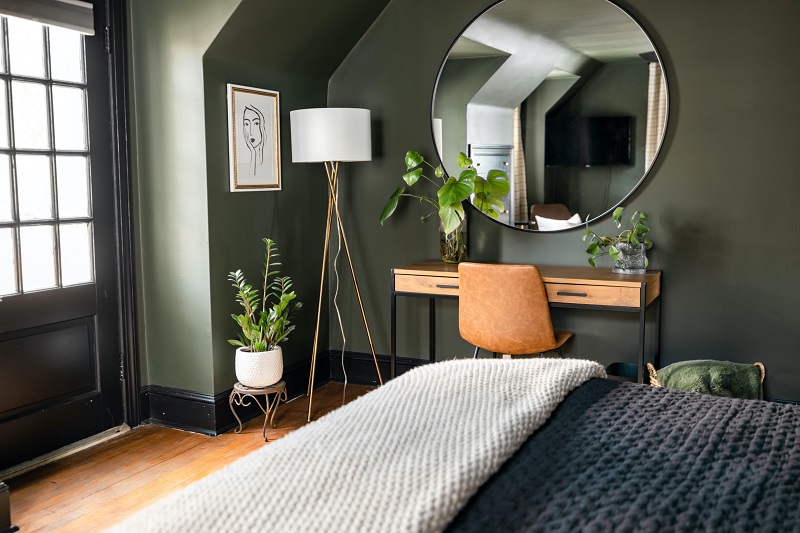You just got the keys to your new house and opened the front door to find it brimming with potential. Every room is a blank canvas, awaiting your artistic touch to be transformed into a space that reflects your style, personality, and way of life. But let’s face it, decorating a new home can feel a bit overwhelming. With so many options and choices to consider, where do you start?
Fear not, for we’re here to guide you through the process with ten decorating ideas for a new home that will help you infuse your space with charm, comfort, and unique flair. Let’s dive into how to decorate a new home!
#1 Embrace Your Interior Design Style
The first step in how to decorate your new home is to define your interior design style. Whether you lean towards the sleek lines of modern minimalism or the cozy vibes of farmhouse chic, understanding your style will provide a roadmap for your decorating journey. Think about the colors, textures, and furniture that resonate with you and create a cohesive look that runs throughout your home.
Here are a few additional tips for defining your interior design style:
- Reflect back on your old home and identify the pieces of furniture and decor you loved: What do they have in common? Are they all made from natural materials? Do they have a lot of curves or straight lines? Once you start to identify the common elements, you’ll be able to narrow down your style.
- Look at magazines, websites, and Pinterest for inspiration: There are endless possibilities for interior design, so it’s helpful to see what other people are doing. Pay attention to the styles that you gravitate towards and start to collect images that you like.
- Don’t be afraid to experiment: The best way to find your style is to try different things. Don’t be afraid to mix and match different styles until you find a look you love.
Remember, there is no right or wrong when it comes to interior design. The most important thing is to create a space that you feel comfortable and happy in. So embrace your style and have fun with it!
#2 Start with the Living Room

The living room is often the heart of the home – a place to relax, entertain, and make memories. When designing your living room, it’s important to create a space that is both functional and inviting.
Here are a few tips for starting with the living room:
- Choose a comfortable and stylish sofa that suits your space: The sofa is the focal point of the living room, so it’s important to choose one that you love and that is comfortable for everyone in your family.
- Add a coffee table for both function and style: The coffee table is a great place to put drinks, snacks, and remote controls. It can also be used as a surface for playing games or doing puzzles.
- Consider the arrangement of your furniture to create a cozy conversation area: Arrange your furniture so that people can comfortably sit and talk to each other. You may want to create a conversation area in front of the fireplace or television.
#3 Play with Color and Paint
Color has the power to transform a room’s atmosphere. Choose a color scheme that resonates with you and complements your interior design style. Experiment with paint colors on a small section of a wall to see how they look in different lighting conditions. Remember, paint is one of the easiest and most affordable ways to make a big impact.
When choosing paint colors, consider the size of the room, the amount of natural light it gets, and the furniture and decor that you already have. If you’re unsure where to start, you can hire a professional interior designer to help you choose the perfect paint colors for your living room.
#4 Create a Focal Point in Each Room

Every room needs a focal point – a standout element that draws the eye and anchors the space. In the living room, it could be a stunning piece of wall art, a fireplace, or even a statement piece of furniture. Design the rest of the room around this focal point to create a harmonious and visually pleasing look.
When choosing a focal point for your living room, consider the size of the room and the style of your home. You’ll also want to think about what you want the focal point to represent. For example, if you want the living room to be a place for relaxation, you might choose a fireplace or a large piece of art that is calming and serene.
Once you’ve chosen a focal point, design the rest of the room around it. For example, if your focal point is a fireplace, you might arrange your furniture so that it faces the fireplace and creates a conversation area. If your focal point is a piece of art, you might place it over the fireplace or a sofa to make it the center of attention.
Don’t be afraid to experiment with different focal points until you find one you love. You can also change the focal point of your living room from time to time to keep things fresh.
#5 Mix and Match Furniture
Gone are the days of perfectly matched furniture sets. Embrace the home decor trend of mixing and matching different furniture pieces for a more eclectic and personalized look. For example, pair a modern sofa with vintage accent chairs or combine rustic wooden tables with sleek metal bookshelves.
When mixing and matching furniture, it’s important to find pieces that have a common thread. This could be a shared color palette, a similar style, or a common material. For example, you could mix and match pieces that are all made from wood, or you could mix and match pieces that are all in the same color family.
You can also use accessories to tie together different pieces of furniture. For example, you could use throw pillows, rugs, or curtains in a common color or pattern to create a cohesive look.
#6 Layer with Textures
Texture is the secret ingredient that adds depth and dimension to a room. Mix and match textures to create a tactile experience that’s visually appealing. Incorporate elements like:
- Plush rugs
- Cozy throw blankets
- Velvet cushions
- Woven baskets
Remember, when layering textures, it’s important to create a balance. You don’t want to go overboard and make the room look cluttered. A good practice is to mix two or three different textures in each space.
You can also use textures to create different zones in a room. For example, you could use a soft, plush rug in the seating area to create a cozy and inviting space. You could then use a more hard-wearing texture, such as a woven basket, in the entryway to create a functional and practical space.
#7 Don’t Neglect Lighting
Lighting can make or break the ambiance of a room. Consider layering different types of lighting, such as overhead fixtures, table lamps, floor lamps, and even wall sconces. This not only ensures functional lighting but also adds a touch of style and drama.
When choosing lighting, it’s important to create a balance of ambient, task, and accent lighting:
- Ambient lighting provides general light for the entire room.
- Task lighting provides focused light for specific activities, such as reading or working
- Accent lighting highlights specific features in the room, such as artwork or architectural details.
You can also use different colors of light to create different moods. For example, warm light is often used to create a cozy and inviting atmosphere, while cool light is often used to create a more modern and sophisticated atmosphere.
#8 Personalize with Wall Art

Wall art is a fantastic way to express your personality and create a visually captivating space. Choose art pieces that resonate with you, whether it be a gallery wall layout of family photos, a statement painting, or a collection of unique art prints. Remember, the key is to choose pieces that bring you joy and tell your story.
When deciding on the wall art to put up, it’s important to consider the size and shape of the space you’re decorating. You also want to think about the style of your home and the type of atmosphere you want to create. For instance, in a small space, you might want to choose smaller wall art sizes that won’t overwhelm the room. If you have a large space, you might want to choose a statement piece that will make a big impact.
You can also use wall art to create different zones in a room. For example, you could hang a painting over the fireplace to create a focal point in the living room. You could also hang a gallery wall of family photos in the hallway to create a welcoming space.
#9 Utilize Vertical Space
Vertical storage not only adds functionality but also gives your room a sense of height. You can install floating shelves, wall-mounted cabinets, or bookshelves to make the most of every inch of your space.
As you use vertical space, it’s important to consider the size and shape of the specific space you’re decorating. For example, if you have a small space, you might want to choose floating shelves that don’t take up any floor space. If you have a large space, you might want to choose wall-mounted cabinets that can store many belongings.
#10 Reflect with Mirrors

Mirrors are a decorator’s secret weapon. They reflect light, making rooms appear larger and brighter. Place mirrors strategically to bounce light around and create an illusion of space. Consider placing a mirror opposite a window to maximize the effect
Mirrors can also be used to create the illusion of depth in a room. One way this is often done is when a large mirror is placed opposite a fireplace or other light source to make the room appear larger and more spacious.
Mirrors are also a wonderful way to add interest to a space, depending on the type you use and how you use it. Ceiling mirrors, for instance, can make a living room seem larger and livlier, while a mirror with a unique frame hug near your main entrance is an immediate conversation starter.
Fill Your New Home With Society6
Indeed, decorating a new house is an exciting journey of self-expression and creativity. With these ten helpful tips, you’re well-equipped to transform your blank canvas into a space that’s uniquely yours.
Society6 will have everything you’ll need (and want) to get started. Whether it is wall art, furniture, or different room essentials, you’ll find everything you need in one place. With thousands of designs from independent artists worldwide, you’ll find something to suit your ideal aesthetic.
Remember, there’s no right or wrong way to decorate – it’s all about creating a home that brings you comfort, joy, and a sense of belonging. So, roll up your sleeves, channel your inner designer, and embark on this exciting adventure of making your new house a place you’re proud to call home.
Sources:
- Nafie, Coral. “Finding Your Room’s Focal Point.” The Spruce, The Spruce, 3 Apr. 2022, www.thespruce.com/find-a-focal-point-in-a-room-1976541
